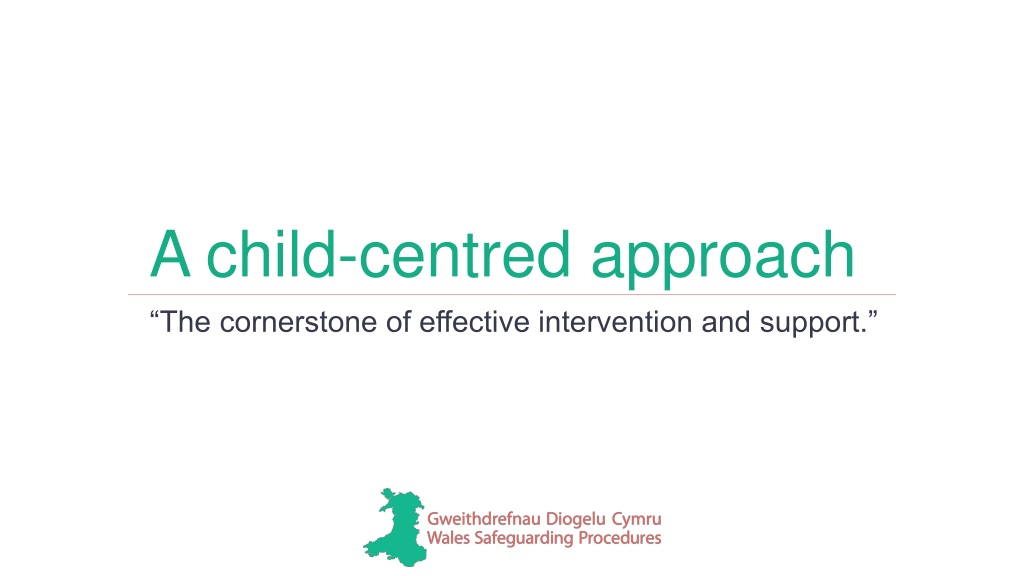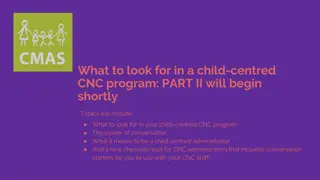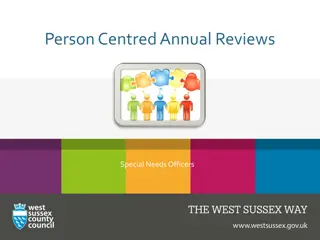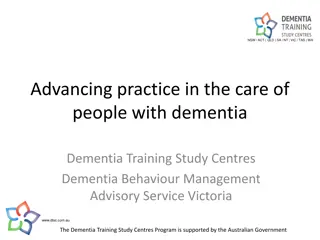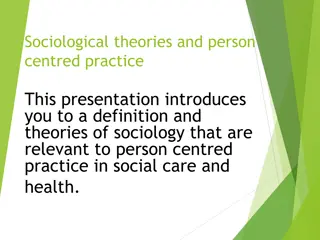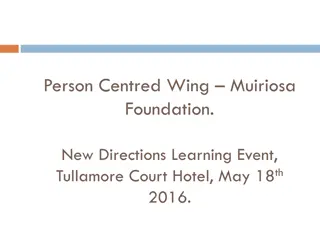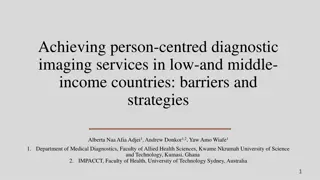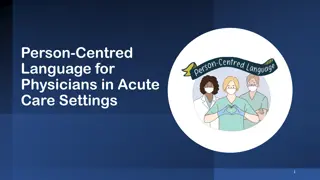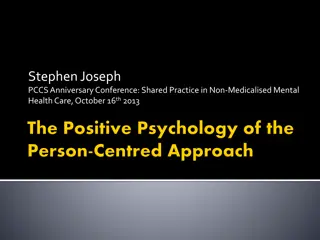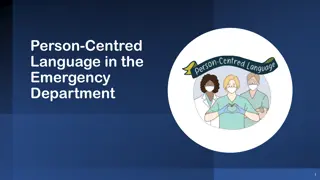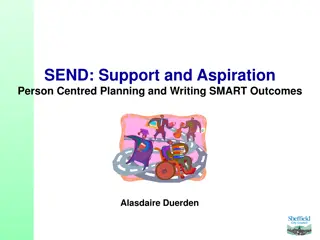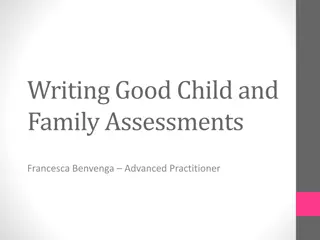Understanding the Child-Centred Approach in Social Services
Embracing a child-centred approach is essential in providing effective intervention and support in social services. This approach prioritizes the rights, best interests, and voices of children, promoting dignity, cultural respect, and involvement in decision-making. Children's desires for awareness, stability, respect, information, explanation, support, and advocacy underscore the significance of this approach in meeting their needs.
Download Presentation

Please find below an Image/Link to download the presentation.
The content on the website is provided AS IS for your information and personal use only. It may not be sold, licensed, or shared on other websites without obtaining consent from the author. Download presentation by click this link. If you encounter any issues during the download, it is possible that the publisher has removed the file from their server.
E N D
Presentation Transcript
A child-centred approach The cornerstone of effective intervention and support.
Legislation Social Services and Well-being (Wales) Act 2014: Any practitioner working with: an individual who has, or may have, care and support needs a carer who has, or may have, support needs children who are looked after must put the person s rights and best interests first consider the person s views, wishes and feelings promote and respect the person s dignity respect the person s characteristics, culture and beliefs support the person to be involved in decisions that affect them
This is called: a child-centred approach Engaging with, and listening to, what children and young people say about what is happening to them should be the cornerstone of effective intervention and support.
How is this approach different? Old approach attitude: we know best process-led system-focused doing things for/to the child/family no clear voice ofthe child Child-centred approach attitude: they know best child/family-led sees the child as an individual outcome-focused obvious voice and control of the child
What do children want? Awareness to have adults notice when things are troubling them Understanding to understand what is happening, to be heard and understood Action to have people act on that understanding
What do children want? Stability to be able to develop a trusting relationship with the people helping them Respect to be treated with respect at all times Information and engagement to be informed about and involved in any decisions that affect their lives
What do children want? Explanation to explain things to them, especially when it is not what they want Support to have their own support, as well as family support Advocacy to have advocacy support to help them express their views
Why use a child-centred approach?
How to use a child-centred approach
How to use a child-centred approach See and speak to the child Aim to establish trust so that the child can be open and honest Understand their daily life experience Aim to understand what a typical day looks like
How to use a child-centred approach Establish what they would like to see change in their daily lives Aim to understand what the child wants as an outcome Put the child s safeguarding interests over their wishes when needed Aim to ensure what s best for the child s well-being
How to engage the family Engage early to build a trusting relationship Discuss possible interventions with the family Encourage them to help develop their own solutions Offer support in a way they can relate to Ensure you communicate with them in a clear and accessible way
What is dignity? Dignity means: seeing and treating every person as a unique individual respecting others views, choices and decisions not making assumptions about how people want to be treated working with care and compassion
What is respect? Respect means: valuing someone as a unique individual take account of other people s views, opinions, feelings, wishes, rights, values and beliefs
What is enabling and empowering? Enabling means helping to create the conditions people need to do something Empowering means helping people to have the authority, freedom or confidence to do things
